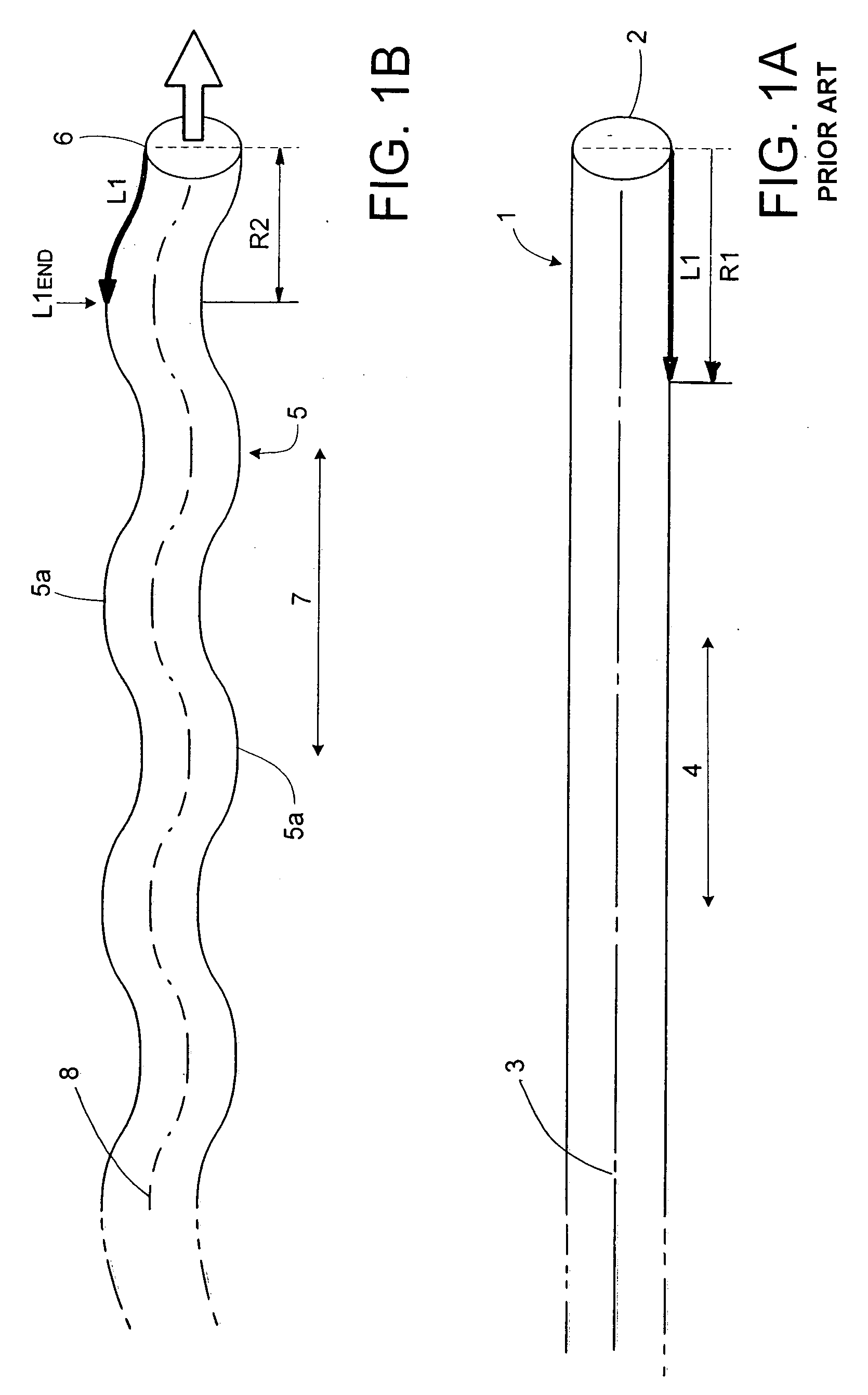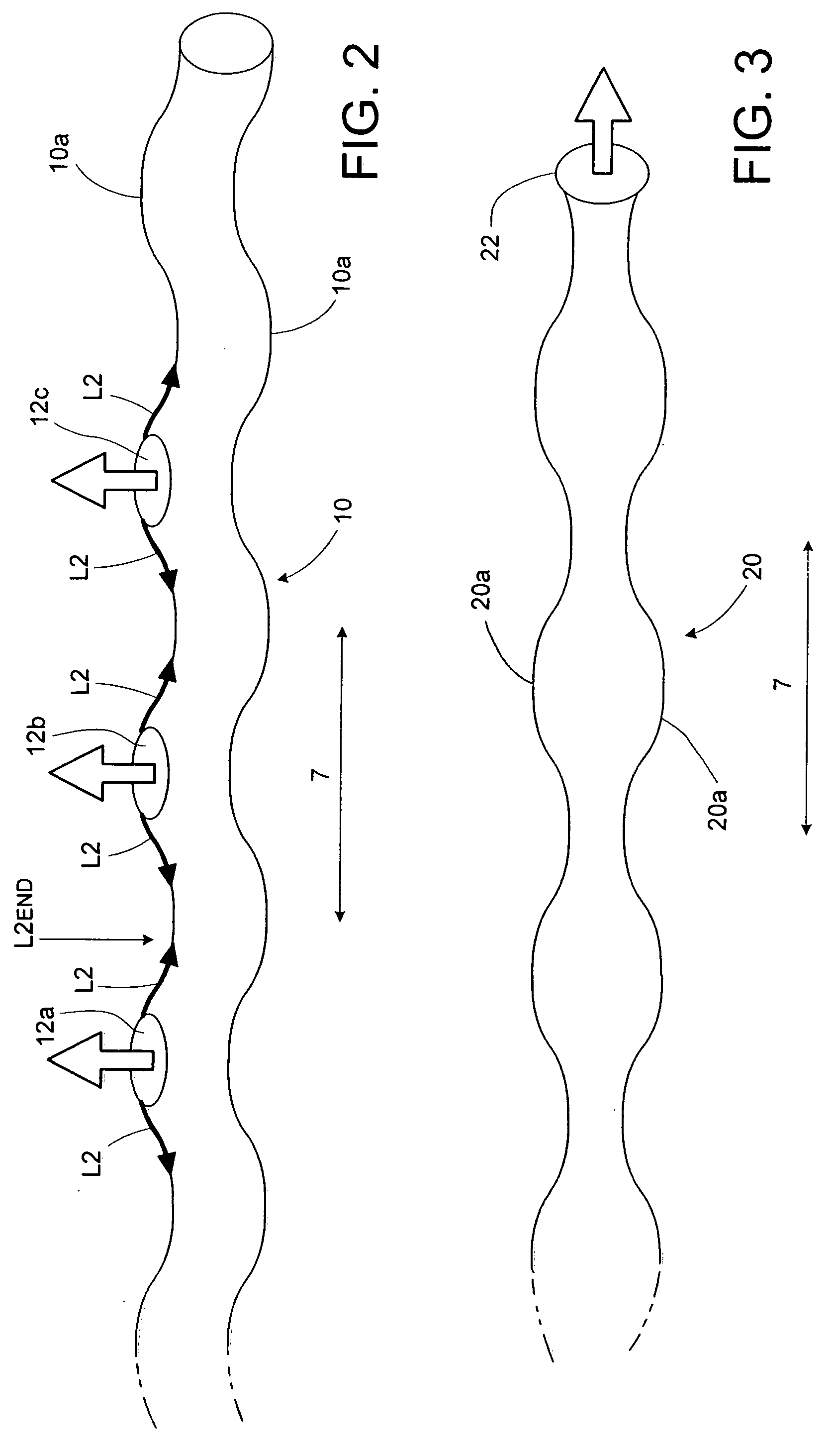Intracranial catheter
a catheter and intracranial technology, applied in the field of catheters, can solve the problems of/or reliably disperse back flowing fluid in the desired area of the body, not being able to reach the desired target, and not being able to safely disperse back flowing fluid along the surface of the sulcus, etc., and achieve the effect of shortening the actual reverse flow distance in the tissu
- Summary
- Abstract
- Description
- Claims
- Application Information
AI Technical Summary
Benefits of technology
Problems solved by technology
Method used
Image
Examples
Embodiment Construction
[0019]FIG. 1A shows a conventional catheter I and more particularly a dispensing portion thereof that is inserted into a body or tissue and which is provided with an opening through which an agent can be administered to the body or tissue, such as the opening 2 at the end of the catheter. The catheter is of uniform cross-section and has a center axis 3 extending parallel to the longitudinal direction of the catheter, such longitudinal (penetration) direction being indicated by the arrow 4.
[0020] In use, the dispensing portion of the catheter will be inserted into a body or tissue to administer a substance to a target area. The catheter opening 2 preferably is positioned relative to the target area such the substance will be delivered to the target area and the smallest amount possible to the area surrounding the target area. As above discussed, some of the substance exiting the opening will backflow along the outer surface of the catheter and away from the area to be treated. The e...
PUM
 Login to View More
Login to View More Abstract
Description
Claims
Application Information
 Login to View More
Login to View More - R&D
- Intellectual Property
- Life Sciences
- Materials
- Tech Scout
- Unparalleled Data Quality
- Higher Quality Content
- 60% Fewer Hallucinations
Browse by: Latest US Patents, China's latest patents, Technical Efficacy Thesaurus, Application Domain, Technology Topic, Popular Technical Reports.
© 2025 PatSnap. All rights reserved.Legal|Privacy policy|Modern Slavery Act Transparency Statement|Sitemap|About US| Contact US: help@patsnap.com



